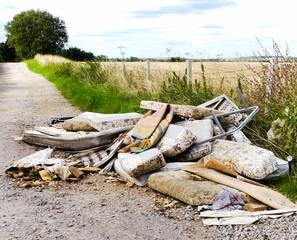Commercial Cleaning Baltimore is the cleaning of large spaces like offices, retail stores and warehouses. It is a more specialized service than janitorial cleaning and requires different equipment and supplies.

Clean facilities are essential for businesses as they create a good impression on customers and clients. Hiring a commercial cleaner is beneficial as they are trained to comply with health and safety standards.
Commercial cleaning is a complex job that involves a variety of health and safety issues. In addition to cleaning up potentially harmful substances, commercial cleaners must deal with a number of physical hazards, including slippery floors and tripping and falling risks. It is important for a commercial cleaning company to have strict health and safety policies in place to protect their employees and clients.
Properly storing and using chemical cleaning products is essential to ensure health and safety. This includes following the manufacturer’s instructions on how to store and use chemical cleaning products, keeping incompatible substances apart, and ensuring that proper protective equipment is used. It is also important for a commercial cleaning company to train its employees in the safe use of chemicals and equipment.
Another aspect of health and safety that commercial cleaning companies need to consider is fire hazards. Keeping waste bins clear of rubbish and preventing the build-up of flammable substances is vital to reduce fire hazards and promote a healthy working environment. Cleaning workers should also be trained in the correct procedures for dealing with a fire emergency. This should include knowing where to meet in the event of a fire, how to evacuate the building and what to do with any hazardous materials.
In addition to these fire safety measures, it is also important for a commercial cleaning company with health and safety policies to carry out regular inspections of their client’s premises. This helps them to identify any potential problems that may arise and take the necessary steps to rectify them. It is also a good idea for a commercial cleaning company to provide its staff with a range of personal protective equipment, such as gloves, face masks and safety goggles.
A clean and hygienic workspace is vital for business owners and their employees. It can help them to maintain a productive and positive work atmosphere, while also improving morale. It is also important for a commercial space to be clean and welcoming for customers. A dirty store can leave a bad impression and discourage customers from visiting again.
Time
Clean environments are good for employee morale. Employees will work harder and faster in a clean space. This will increase productivity and help the business make more money. It is important to hire a professional commercial cleaning service to keep your office looking and smelling fresh.
A dirty workspace can also cause employees to be sick. When employees are sick, they lose valuable production time at the office. Professional cleaning companies can help prevent the spread of germs by sanitizing surfaces, wiping down furniture and equipment, and vacuuming carpets. This will reduce the number of sick days and boost overall productivity.
In addition to regular cleaning services, many professional cleaners can offer special services for high-traffic areas, including restrooms, break rooms, and dining spaces. They can also provide trash removal, window cleaning, and floor care services. The most effective way to ensure a successful partnership with a cleaning company is to negotiate a contract that clearly states the terms of service. This will eliminate any confusion or disagreements and ensure that both parties are aware of their obligations.
Having a clean workplace is not only good for employees, it is good for the environment and will save you money in the long run. It is important to hire a company that is experienced and uses eco-friendly products. This will improve the quality of your work and keep your business healthy for years to come.
The cost of hiring a commercial cleaning company depends on the size of your building, the frequency of visits, and the type of cleaning services you need. It is a good idea to get quotes from three different cleaning companies and compare them before making a decision. Make sure you are clear about the scope of work and that all costs have been accounted for.
A reputable commercial cleaning company will use a flat rate pricing model to avoid price haggling and mistrust between client and cleaner. A flat rate pricing model allows clients to budget for their cleaning expenses and provides cleaners with a steady stream of revenue. This system is also more efficient than charging hourly rates.
Money
There are many different factors that go into the cost of cleaning a commercial property. For example, a company may need to purchase or lease cleaning equipment, which can add up to a significant amount of money. There are also other expenses, like employee wages and supplies. Additionally, some companies may need to take out insurance policies to protect themselves in case of an accident on the job.
The type of building you’re cleaning also affects the price. For example, a medical facility will have more specialized cleaning requirements that will require extra time and equipment. In addition, some buildings will need special treatments, like stripping and waxing, which is more costly than a basic clean.
Aside from the cost of labor and materials, a commercial cleaning company must also consider overhead costs. These include insurance, equipment rental, and cleaning supplies. You can minimize these costs by hiring a professional cleaning service that offers transparent pricing. In addition, you can use a bidding calculator to help you estimate the total cost of the project.
Some companies use a flat fee system, where they charge a set price for each task. This can be an effective option for companies that only need regular tasks, such as emptying trash bins and refilling paper towels. Other companies may need more specialized services, such as cleaning restrooms or window washing. In these cases, a janitorial service will typically provide an estimate of how long the job will take.
When choosing a cleaning service, it’s important to find one that understands your needs and will adapt their process to fit your facility. A reputable company will offer a competitive price and value your business. They will also ensure their employees are properly trained and supervised. This will prevent accidents and injuries on the job.
While it’s tempting to save money by doing some or all of your cleaning yourself, this can be dangerous for both you and your employees. Hiring a commercial cleaning company is the safest option. You can find professional janitorial services on Bark, where they’ll match you with local companies that meet your needs and budget.
References
When deciding on a commercial cleaning service, you should ask for references from the company. This is an excellent way to learn about their services and client satisfaction. You should also ask about the length of time the company has been in business. A long-standing relationship can indicate that the company is reliable and trustworthy.
When asking for references, be sure to request contact information that you can use to reach out and speak with them. Then, take the time to call each reference. Be sure to be polite and respectful, as you are contacting them to ask questions about their experience with the cleaning company. You should ask questions such as whether they were happy with the company’s work, if the cleaning staff was punctual, and if they had any issues with the service.
It is also important to find out how the company selects their cleaning products and if they can provide MSDS sheets for each chemical. This will help you determine if the chemicals are safe for your environment. Additionally, you should also inquire about the training the cleaning company provides to its employees. This will ensure that the cleaning process is efficient and safe.
Lastly, you should ask the cleaning company about any unique technologies or innovations they have introduced in their cleaning processes. These innovations can make their cleaning process more efficient and effective than others. For example, they may have a specialized cleaning method for carpets or a green cleaning process that reduces environmental impact.
In addition to asking for referrals, you should also look for online reviews and testimonials. These will help you determine if the company is the right fit for your needs. Also, you should check to see if they have the necessary licenses and insurance to operate in your area.
A commercial cleaning company is a service that cleans offices, schools, hospitals, and other types of businesses. They are sometimes called custodians or janitors, and they often have specific training in their field of expertise. Commercial cleaning is a complex and time-consuming job, so it’s important to hire a trusted professional for the job. The right cleaning company will keep your facility clean and organized, leaving you free to focus on more important things.








